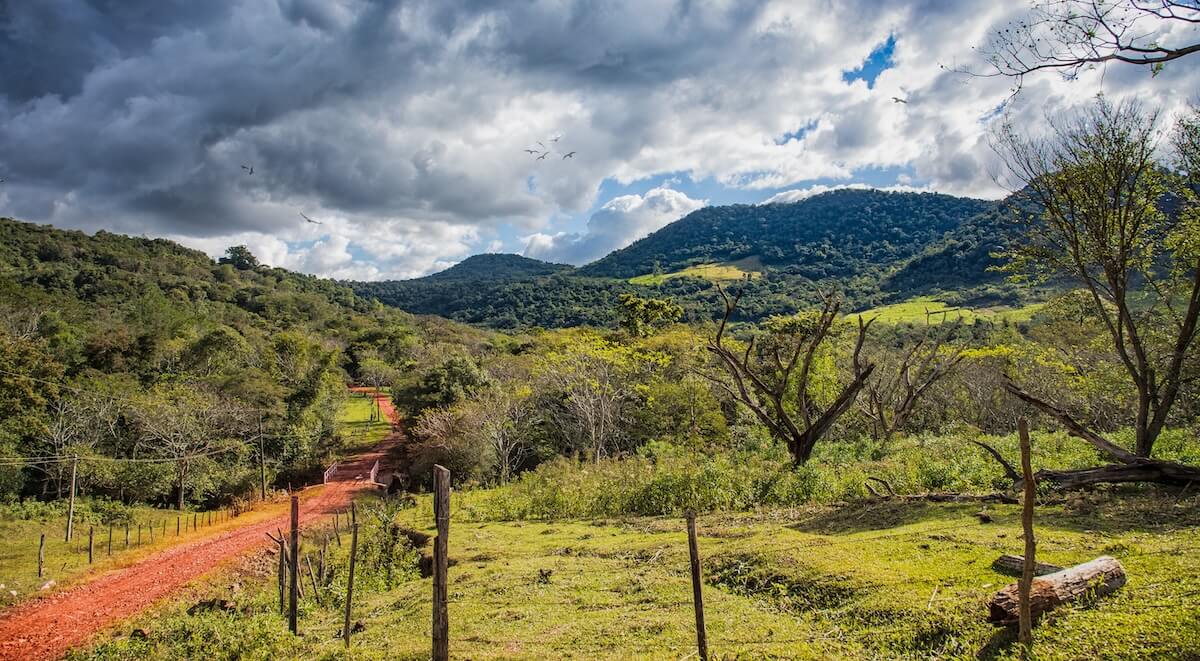Native American tribes have become a driving force on California’s carbon markets, making millions of dollars while conserving native lands.
With a nearly half-billion dollar philanthropic commitment to forests and land conservation, a group of foundations are putting such efforts by indigenous people at the forefront of the climate agenda.
The climate reality is this: Reducing emissions is not enough. We also have to take carbon dioxide out of the atmosphere. Carbon-capture technologies remain expensive. That makes natural land-based solutions – in other words, trees and soil – our best hope for carbon removal.
Trees soak up roughly 30% of the carbon we add to the atmosphere each year. By 2030, conserving forests and lands could provide roughly one-third of the carbon emissions reductions needed to avert dangerous global warming. Yet only 3% of total climate-change funding goes to protecting forests.
The philanthropies, including the Packard, Rockefeller, Ford and Moore foundations, have pledged $459 million through 2022 to put forest and lands conservation atop the climate agenda. At the center of the effort is a recognition of the role indigenous people and traditional communities play as stewards of the land.
“If our rights as indigenous peoples are recognized, we can continue to protect these lands for generations to come,” Vicky Tauli-Corpuz, UN special rapporteur on the rights of indigenous peoples, said in a statement. Globally, indigenous and local communities hold about one-quarter of all above-ground tropical forest carbon.
The foundation commitment, announced in advance of the Global Climate Action Summit in San Francisco, will fund projects to halt and reverse forest loss, advance sustainable land use and and secure the rights and livelihoods of indigenous and forest communities. The hope is that this “catalytic” capital attracts additional financing.
“We know what the solutions are, but we need a lot more investment, and we need it faster,” Belinda Morris, program officer for climate and land use at the David and Lucile Packard Foundation, told ImpactAlpha.
Tribal carbon
The California carbon market has become one of the largest revenue streams for financing forest conservation and climate action. By setting a price on carbon, the state’s cap-and-trade system allows landowners to earn money through forest conservation and sustainable management.
Here’s how it works: The landowner makes a 100-year commitment to maintain and even increase storage of carbon on their property by protecting and/or restoring forests. California issues the landowner carbon credits based on the number of tons of carbon emissions averted. The credits can be sold on the state’s market to a polluter, such as an oil company or utility, that is required to offset their emissions. Of the approximately $1 billion in carbon offset transactions on the California market since 2014, more than three quarters have been earned for improved forest management.
The majority of those forest conservation offsets to date have come from tribal lands, says Brian Shillinglaw, executive director of the US arm of New Forests, an Australian sustainable real assets investment manager with $3.5 billion in assets under management globally. That has translated into hundreds of millions of dollars for Native American tribes. New Forests says investment returns are “market rate” for project finance. New Forests estimates there’s more than $20 billion of high-carbon-value timberlands in the U.S.
“Native American tribes have really taken the lead in capitalizing on this new source of conservation finance,” Shillinglaw says. “This is the first time there’s been a price signal at scale for not cutting down trees and growing forests.”
Through its Forest Carbon Partners fund, the firm has financed forest carbon offset projects for seven different Native American tribes, including Chugach Alaska Corporation, the Mescalero Apache Tribe in New Mexico and California’s Yurok Tribe.
Encourage Capital’s EKO Green Carbon Fund developed a similar project with the White Mountain Apache tribe, covering 89,000 acres on the Fort Apache Indian Reservation in Arizona. The project is expected to produce over 3.5 million offsets.
Such forest-carbon funds typically finance the upfront costs of offset project development, act as the agent to sell the credits and receive a small percentage of the revenue from the sale.
New Forests and the Yurok Tribe have been working together since 2014, when they registered the first forest carbon offset project on the California market. The project allows the tribe to preserve large swaths of northern California’s forest and fight climate change. The tribe is reinvesting the income to conserve salmon habitat, reassemble their ancestral lands and preserve their culture.
National model
California’s market suggests what could be possible if carbon were to be priced more broadly. “I do think California has proven out that this can work, and it has had very positive outcomes,” says the Packard Foundation’s Morris. A U.S.-wide carbon market is not likely any time soon. But regional cap-and-trade systems are developing in the Northeast, and in states such as Washington and Oregon.
“We are committed to using our catalytic capital to support new and creative ways of attracting capital at scale toward sustainable land use and forest management practices,” said the Rockefeller Foundation’s Raj Shah. Other participants in the foundation consortium include the ClimateWorks Foundation, Doris Duke Charitable Foundation, Margaret A. Cargill Philanthropies and Mulago Foundation.











